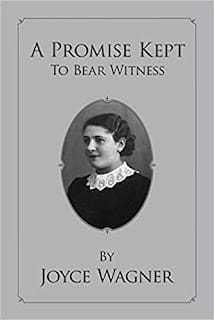Remembering the HolocaustNovember 9 and 10th mark the 75th anniversary of the riots against Jews in Germany that we know as Kristallnacht – the night of the shattered glass. In those 12 hours of mayhem, over 7500 Jewish businesses were attacked, 1000 synagogues were set to fire across Germany and Austria, and nearly 100 people were killed. The rioting was not a spontaneous action by Germans and Austrians. It was orchestrated by Hermann Goering and by Richard Heydrich, two of the Nazi leaders closest to Hitler. The following day, when the smoke cleared, so to speak, Goering presided over a meeting that included Heydrich as well as German insurance executives. The streets in front of synagogues were strewn with rubble, and it was determined that the Jewish community would have to pay for the clean-up. It turned out that although Jewish businesses were attacked that night, the businesses were often in buildings owned by Germans. The German owners ended up having to file claims against their insurance companies – something the insurance executives were not happy about! The world also condemned Kristalnacht, wondering how such a brutal riot could take place in such a civilized country as Germany. Goering realized that this action against the Jews was a big mistake, and resolved never to do anything like it again. The destruction of German Jewry would have to be accomplished in a much more systematic and controlled manner. Raoul Hilberg, the great scholar of the Holocaust, taught that Kristallnacht was not the first act of the genocide against the Jewish people. Rather, it was the final act of the traditional way of persecuting Jews in Europe – it was the final pogrom. It was the end of the medieval way that governments and communities attacked their Jewish populations. From that time on, Germany would pioneer modern methods of genocide. That would lie in the future. For now, Germany wanted to rid itself of her Jews through making life unbearable for them in Germany. Voluntary emigration was the goal of the Nazis. Kristallnacht did convince many Jews that there was no future for them in Germany. Up until Kristallnacht many held out hope for the future of Jews in Germany. When Hitler came to power in 1933, there were 520,000 Jews in Germany. By the time of Kristallnacht, in 1938, there were only 300,000 Jews left in Germany, the result of emigration, and 190,000 in Austria. After Kristallnacht, it became apparent to the Jewish community that Jews could no longer survive in Germany. One hundred thousand Jews left Germany in the months after Kristallnacht, and 80,000 left Austria. Some of them found refuge in Cuba or Shanghai or other places in the world, and were thus saved from the Holocaust. Emil Fackenheim was a prominent theologian and a Reform Rabbi who died in 2003 in Jerusalem. At the time of Kristallnacht he was a young man studying to become a rabbi and living in Berlin. He was rounded up by the Nazis in the days following Kristallnacht, along with 30,000 other Jews. He was transported to the Sachsenhausen, concentration camp about 25 miles from Berlin. In the crisp autumn air he and others were made to strip and stand naked for hours in the main assembly area of the camp. As the afternoon waned, it began to get colder and colder. Finally, the Kommandant of the camp came out to address the freezing and exhausted prisoners. The Kommandant stood before them next to the cage of his pet parrot. On the cage was a sign saying, “It is forbidden to tease the bird.” “I knew then,” Fackenheim later wrote, “that we naked and shivering Jews could never aspire to the status of a German pet”. Fackenheim was released from the concentration camp after three months on condition that he would leave the country. He made his way to Scotland where he enrolled as a doctoral student at the University of Aberdeen. However, he was detained as an enemy alien of military age and deported to Canada where he was imprisoned for a while before gaining his freedom. He earned his PHD in Philosophy from the University of Toronto and some years later joined its faculty where he taught until 1984. Although he had a distinguished academic career, Fackenheim is perhaps best known for his formulation of what came to be known as the “614th commandment.” For those who are unfamiliar with the Jewish tradition, it is said that the Torah contains 613 commandments. Fackenheim wrote, “We are, first, commanded to survive as Jews, lest the Jewish people perish,” he said. “We are commanded, secondly, to remember in our very guts and bones the martyrs of the Holocaust, lest their memory perish. We are forbidden, thirdly, to deny or despair of God, however much we may have to contend with him or with belief in him, lest Judaism perish. We are forbidden, finally, to despair of the world as the place which is to become the kingdom of God, lest we help make it a meaningless place in which God is dead or irrelevant and everything is permitted. To abandon any of these imperatives, in response to Hitler’s victory at Auschwitz, would be to hand him yet other, posthumous victories.” In the recently completed Pew Survey of American Jewry, people were asked, “What does it mean to be Jewish?” Seventy three percent of those asked, the highest percentage of any response, answered, “It means to remember the Holocaust.” How do we remember the Holocaust? If “remembering the Holocaust” means that we make a personal commitment to Judaism so that it survives; if it means never forgetting the victims, if it means that we never despair of G-d no matter what; if “remembering the Holocaust” means that we will work to make our world a better place; a place which becomes the Kingdom of G-d; if “remembering the Holocaust” means that we will never accept Jewish powerlessness again, if it means we will never again allow the fate of the Jewish people to depend on the good will of others, then Judaism is in good shape in America. I wonder — Does it mean that to those who responded? Does it mean that to you? May it be so! Good Shabbas.
Parasha VaYetze
- Post author:Marc Rudolph
- Post published:November 10, 2013
- Post category:Rabbi Marc Rudolph's Sermons / Uncategorized


